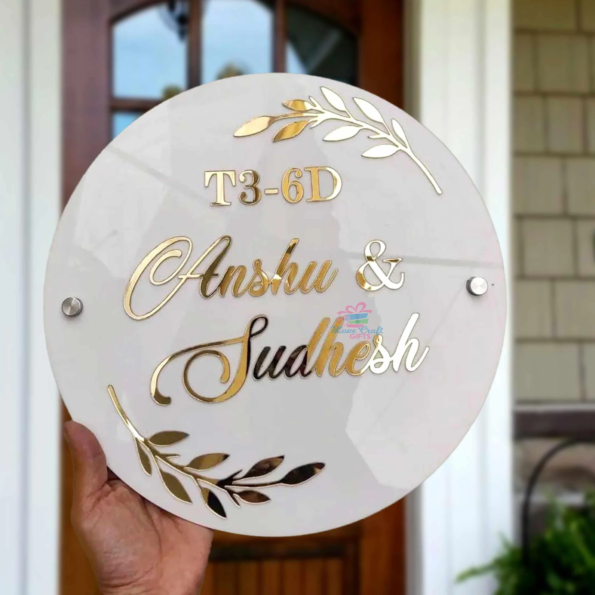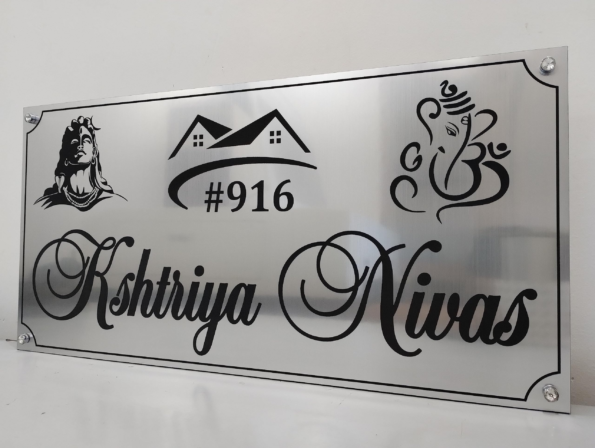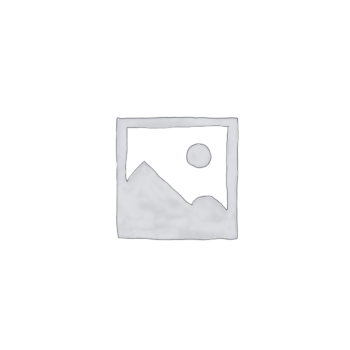When it comes to selecting the perfect nameplate material, several factors must be considered to ensure durability, aesthetics, and functionality. The best nameplate material varies depending on the intended use, environment, and budget.

For outdoor applications, materials like stainless steel, brass, or aluminum are popular choices due to their weather resistance and longevity. These materials withstand harsh weather conditions, UV exposure, and corrosion, ensuring your nameplate remains intact and readable for years to come.

Indoors, materials like acrylic, wood, or glass offer versatility in design and customization options. Acrylic is lightweight, durable, and can be easily customized with various colors and finishes, making it ideal for modern and creative nameplate designs. Wood provides a classic, rustic look and can be engraved or painted for a personalized touch. Glass offers a sleek, elegant appearance and is perfect for upscale settings. In the realm of personal and professional identification, nameplates serve as crucial elements. They not only display names but also convey a sense of identity, status, and style.

However, choosing the right material for your nameplate can be daunting, given the array of options available. From traditional brass to modern acrylic, each material offers unique characteristics suited to different needs and preferences.

In this comprehensive guide, we’ll explore various nameplate materials, their features, advantages, and applications to help you make an informed decision.
Brass:
Features: Brass nameplates exude elegance and durability. They boast a classic, timeless appeal and are known for their resistance to corrosion and weathering.
Advantages: Ideal for both indoor and outdoor use, brass nameplates offer longevity and require minimal maintenance. They can be customized through engraving or etching, allowing for intricate designs and fonts.
Applications: Commonly used in prestigious institutions, corporate offices, and upscale residences, brass nameplates lend a touch of sophistication and professionalism.
Stainless Steel:
Features: Stainless steel nameplates are synonymous with strength and resilience. They are highly resistant to rust, tarnish, and fading, making them suitable for various environments, including harsh outdoor conditions.
Advantages: With their sleek, modern appearance, stainless steel nameplates complement contemporary aesthetics. They offer excellent durability and can withstand exposure to chemicals, making them ideal for industrial and commercial settings.
Applications: Widely utilized in factories, warehouses, and marine facilities, stainless steel nameplates convey a sense of reliability and professionalism. They are also popular choices for high-end residential properties seeking a minimalist look.
Aluminum:
Features: Aluminum nameplates strike a balance between affordability and durability. They are lightweight, yet sturdy, and can be finished in various colors and textures to suit different preferences.
Advantages: Easy to customize through printing, embossing, or anodizing, aluminum nameplates offer versatility and visual appeal. They are resistant to corrosion and fading, making them suitable for both indoor and outdoor applications.
Applications: From office door signs to equipment labeling, aluminum nameplates find widespread use across industries. They are favored for their cost-effectiveness and ability to convey essential information with clarity.
Acrylic:
Features: Acrylic nameplates are prized for their versatility and aesthetic appeal. Available in a range of colors, shapes, and thicknesses, they offer endless design possibilities.
Advantages: Lightweight and shatter-resistant, acrylic nameplates are easy to handle and install. They can be laser-cut or engraved with precision, allowing for intricate details and creative designs.
Applications: Ideal for indoor use, acrylic nameplates are commonly seen in retail stores, offices, and residential settings. They add a touch of modernity and can be customized to reflect brand identity or personal style.
Wood:
Features: Wood nameplates evoke warmth and sophistication, making them popular choices for traditional and rustic settings. They come in various wood species, each offering its unique grain patterns and hues.
Advantages: With their natural beauty and timeless appeal, wood nameplates add character to any space. They can be engraved, carved, or laser-etched to create custom designs that showcase the richness of the wood.
Applications: From cabin signs to executive desk plates, wood nameplates find favor in environments seeking a touch of organic charm. They are often chosen for their eco-friendly credentials and ability to blend seamlessly with nature-inspired décor.
Plastic:
Features: Plastic nameplates offer affordability and versatility, making them suitable for a wide range of applications. They come in various colors, thicknesses, and finishes to meet diverse needs.
Advantages: Lightweight and durable, plastic nameplates are easy to maintain and can withstand exposure to moisture and UV rays. They can be printed, molded, or engraved with logos, text, and graphics.
Applications: From healthcare facilities to hospitality establishments, plastic nameplates serve as cost-effective solutions for identification and branding. They are valued for their durability and ability to withstand heavy use.
Glass:
Features: Glass nameplates exude sophistication and refinement, making them ideal for upscale environments. They offer a sleek, translucent surface that can be customized with various etching and printing techniques.
Advantages: With their high-end appearance and durability, glass nameplates make a lasting impression in corporate offices, luxury hotels, and executive suites. They are easy to clean and maintain, retaining their clarity and shine over time.
Applications: Often used for executive nameplates, awards, and commemorative plaques, glass nameplates add a touch of elegance to any space. They are favored for their ability to reflect light and create a sense of prestige.
In conclusion, the best nameplate material depends on factors such as aesthetics, durability, budget, and intended application.

Whether you prefer the timeless charm of brass, the sleekness of stainless steel, or the versatility of acrylic, there’s a material to suit every style and requirement.

By carefully considering your needs and exploring the features of each material, you can select the perfect nameplate that enhances your space and leaves a lasting impression.


I really loved this company services. and finishing of products 🥰